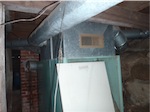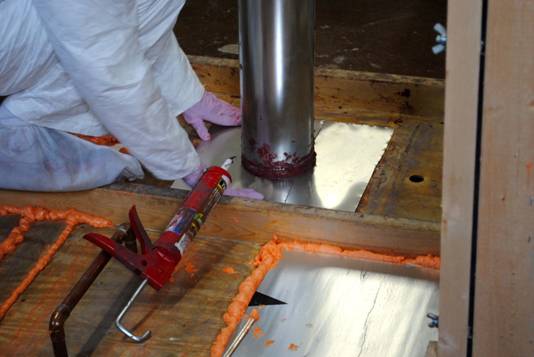Better Labeling
Thanks to the efforts of the National Fenestration Rating Council (the NFRC is a collaborative effort between manufacturers, the Department of Energy, utility companies, and others) most building codes now require windows to be labeled via the NFRC process.
This NFRC label gives you specific information about the whole window performance, not just the glass or components (Figure 1). For example, a single pane of clear glass transmits about 90 percent of the visible light striking it, giving it a VT of 0.90. For the whole window, including sash and frame, however, the VT drops to about 0.60 or more, depending on the specific window.
U-factor
measures how well a product prevents heat from escaping; the lower the U-factor, the greater a window’s resistance to heat flow and the better its insulating value. The U-factor is the inverse of the more common R-value measurement. For example, a window with U-factor of 0.25 has an R-value of 4 (1/.25 = 4).
Solar heat gain coefficient (SHGC)
measures how well a window blocks heat from incoming sunlight. The number, from 0 to 1, is the fraction of incident solar radiation admitted through a window. The lower a window’s SHGC, the less solar heat it transmits into the house.
Visible transmittance (VT)
measures how much light comes through a window and is also expressed as a number between 0 and 1. The higher the number, the more visible light gets through the window.
Air leakage (AL)
is a measure of infiltration through cracks in the window assembly. The rating is expressed as the equivalent cubic feet of air passing through a square foot of window area. The lower the AL, the less air will pass through a window.
Condensation resistance (CR)
measures the ability of a window to resist the formation of condensation on the interior surface during cold weather. CR is expressed as a number between 0 and 100. A higher rating indicates the product is better at resisting condensation formation.
Matching Windows to Climate
A companion to the NFRC label is the Energy Star label (Figure 2), which makes it easy to tell whether a given window is right for your climate. The Energy Star rating is based on minimum Department of Energy (DOE) performance specifications by region (Figure 3).
In the absence of an Energy Star label, follow the Energy Star guidelines in Figure 3. The program groups window requirements based on four climate regions.
This forum provides you with resources about home renovation, improvement, makeover and repair topics such as cabinet replacement, construction, drainage, drought tolerant landscape, flooring, furnace, furniture, gardening, heating system, home appliances, home performance, kitchen design, landscape planning, low flow toilets, mold removal, non-toxic material, plumbing, remodel planning, retrofit, roof tiles, saving water, solar panel, solar system, water conservation, window replacement, and many others. While we focus on issues in California, particularly in the San Francisco Bay Area, San Jose, Oakland, Alameda, Contra Costa, Dublin, Fremont, Marin, Mountain View, Redwood City, San Ramon, Santa Clara, Santa Cruz, Sausalito, Walnut Creek, most information is applicable in all parts of USA as well as the rest of the world.
Continue reading … 1 2
3 4 5 6







